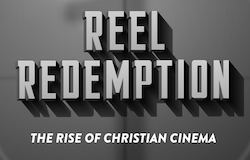Oh, Hi! by Bob Connally
12 Dec
“Greetings, my friend. You are interested in the unknown. The mysterious. The unexplainable. That is why you are here. And now for the first time, we are bringing you the full story of what happened. We are giving you all the evidence, based only on the secret testimony of the miserable souls who survived this terrifying ordeal. The incidents, places… My friend, we cannot keep this a secret any longer. Can your heart stand the shocking facts of the true story of…” the making of The Room?
Leading up to the release of The Disaster Artist, James Franco’s comedic account of the making of the 21st century’s truest bona fide cult movie The Room, many have understandably drawn comparisons to Tim Burton’s masterpiece Ed Wood. Like Ed Wood, The Disaster Artist seems to say to us out of the gate, “Look, we know that you know it didn’t really happen like this, but this is how it should have happened, so let’s just have some fun” (though in many ways it would appear that the true story was even stranger than what we see here). Also just like Ed Wood, The Disaster Artist benefits greatly from this approach.
Franco’s film even starts off similarly, first with actors giving testimonials about The Room followed by the introduction of our protagonists in a small local theater. It’s San Francisco in 1998 and young Greg Sestero (Dave Franco) is a struggling actor who is chided by his teacher (Melanie Griffith) for his lack of emotion through two months of class. When she looks to the rest of the room for an actor willing to bear his or her soul on stage, she has a taker in the mysterious Tommy Wiseau (James Franco). Bearing his soul and then some, Tommy’s strangeness doesn’t put off Greg who is astounded by Tommy’s commitment. The two become fast friends despite Tommy’s odd behavior as Tommy inspires Greg to come out of his shell.
Emboldened by one another they decide it’s time to take the leap and move to Hollywood to grab the film industry by the tail. As is so often the case however, they find nothing but failure for several months before Greg’s offhand comment about wishing they could just make their own movie lights a spark inside of Tommy. He’s going to write a movie for them to star in together. Something about real human behavior and it’s called…The Room.
In the 14 years since its release, The Room has become a midnight movie staple, playing to packed houses and building a legion of fans all over the world. People have a far greater love for it than many much better films (which of course most movies are). Its popularity and legacy are due to the fact that so many people have so much fun watching it. Most bad movies are boring. It’s a large part of what makes them so bad. People react differently to The Room however, in much the same way that people react to Ed Wood’s Plan 9 From Outer Space and Glen or Glenda.
In the interest of full disclosure I’ll just tell you, I have never seen The Room outside of a handful of scenes. The idea of watching bad movies to mock them has never had much appeal for me. I only have so much time to watch movies and only so much money I can spend to see them so I would rather focus on things that I expect at least have a chance to be good. I feel like that approach has served me well for the most part, but… I now feel like it led me to miss out on the phenomenon of The Room as it started to pick up steam. What Franco and screenwriters Scott Neustadter and Michael H. Weber (500 Days of Summer) capture beautifully- even for viewers like me who have never seen The Room– is what appeals to so many people about Wiseau’s opus. Wiseau’s mind is a strange and fascinating place as presented by Franco’s hilarious yet emotionally raw performance. It’s no wonder Wiseau would create something so watchable.
As long as we’re drawing comparisons to Ed Wood, Wiseau comes across like something of a combination of Johnny Depp’s Ed and Martin Landau’s Bela Lugosi. Tommy’s commitment to and belief in his dream and vision (in spite of his egregious lack of talent) are coupled with his volatile temper. Franco is incredibly funny while also showing us a man who we often can’t stand (or understand), but one we can have some sympathy for. Beyond that though, the greatest triumph of Franco’s performance and film overall is that it’s impossible not to have admiration for Tommy. Regardless of the end result, Tommy saw his vision through to the end, all with his own money (the source of which remains a mystery).
As Greg, Dave Franco really represents the audience as we share his frustrations. Making incredible sacrifices in both his professional and personal lives, Greg stands by Tommy through it all and Dave Franco lets us in to see why. The real life brothers playing off of each other make us forget that’s what they are and lets us see instead the brotherhood forged between these two decidedly unlikely friends. The portrayal of this friendship is ultimately the strongest element of The Disaster Artist and what makes it more than just the chronicling of a famously terrible movie.
The rest of the standout cast includes Seth Rogen, Alison Brie, Paul Scheer, Josh Hutcherson, and Jacki Weaver as people who react to Tommy as the vast majority of us almost certainly would upon meeting him. Understandably, their experience working with him is a largely unpleasant one, but what they couldn’t have possibly seen at the time is what it was in service of: a work of art that would make its mark upon the world in the most unique of ways. Say what you will about Tommy Wiseau or The Room, but how many filmmakers or films are worthy of getting their own- largely affectionate- movie made about them? It’s a short list but it includes Edward D. Wood, Jr. and Tommy Wiseau.




No comments yet